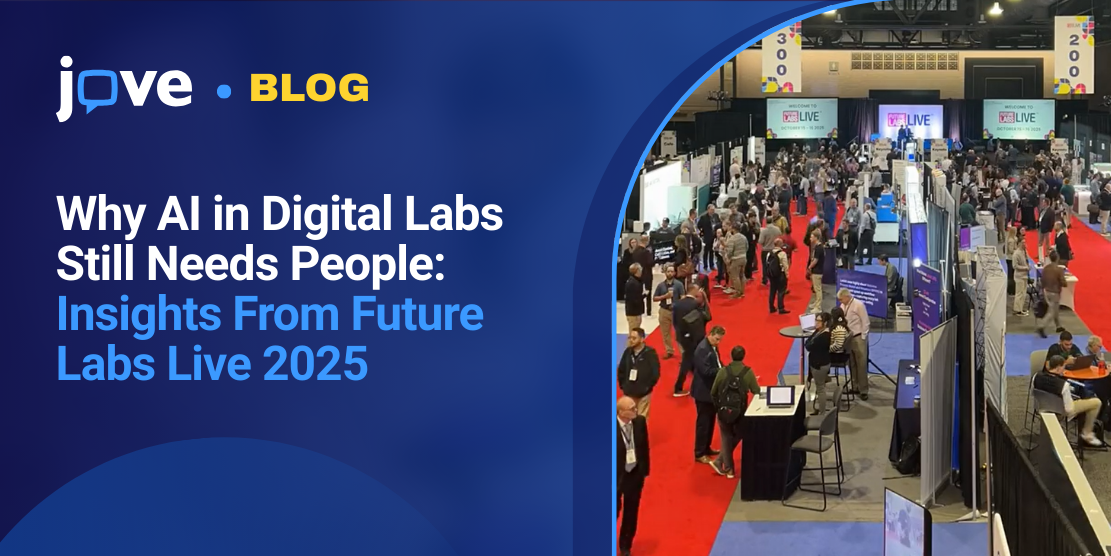For a conference focused on the future of laboratory technology, Future Labs Live USA 2025 spent a surprising amount of time talking about people.
The message came through again and again. Meaningful digital transformation only works when the humans behind the data can use it, trust it, and shape it. Across sessions and informal conversations, attendees kept returning to the same idea: without human judgement and context, even the most sophisticated tools struggle to make an impact.
The AI Paradox
Despite growing confidence and investment in AI, a recent MIT study found that 95% of generative AI pilots in companies fail to deliver measurable results.¹ This number was mentioned repeatedly in conversations across the event and shaped the tone of many discussions.
This failure rate does not reflect a lack of interest or investment. Instead, it highlights a gap between technological potential and the conditions required to use these tools effectively. Several attendees described pilots that looked promising in early demonstrations but stalled when applied to real workflows, where context, training, and data consistency mattered far more than expected.
The paradox raised a fundamental question:
If so many AI pilots are failing, what does successful digital transformation actually require?
Four Shifts Driving Digital Labs
Across the discussions, four connected shifts emerged that helped explain how laboratories are approaching digital transformation.
💡1. Human expertise remains the anchor
Despite increasing automation and AI, scientific progress continues to rely on the creativity, judgement, and implicit knowledge of researchers. Early-career scientists spoke about rising pressures and limited resources. Many noted that new tools should reduce cognitive load and support learning, not introduce additional complexity.
💡2. Integration and standards are becoming essential
AI, automation, and orchestration depend on systems that work smoothly together. Speakers pointed to the need to connect instruments, unify data streams, and use standards like SiLA and AnIML to support communication across tools. Without this groundwork, even advanced technologies can be difficult to scale.
💡3. Knowledge capture keeps gaining momentum
Several sessions focused on how vision-based models and video can record laboratory actions and turn them into digital protocols that others can repeat. This reflects a wider shift toward making tacit lab knowledge visible for training, collaboration, and reproducibility. As someone working at JoVE, I saw clear parallels. Our work with video has long aimed to make scientific practice visible and contextual, and the discussions at Future Labs Live showed how essential that need remains as labs adopt new digital tools.
💡4. Culture and collaboration shape outcomes
Technological upgrades are only part of the process. The most successful labs invest in culture, alignment, and shared roadmaps. Because digital workflows cross teams, departments, and vendors, collaboration is essential. Without it, even excellent systems remain isolated.
These shifts point toward a broader insight. Progress depends on designing digital systems around how people actually work, not on expecting people to conform to the limitations of new tools.
A Human-First Digital Future
Reflecting on Future Labs Live USA 2025, the direction became clear. The laboratories that will thrive are the ones that combine strong digital tools with the expertise and experience of the scientists who use them. They will focus on context, clarity, and shared understanding. They will prioritize transparency, training, and reproducibility.
This is a future where digital systems strengthen human capability rather than compete with it. As the industry navigates this next phase of AI-driven innovation, I am optimistic. No matter how advanced our tools become, the success of science will still depend on the people behind the data—and how we empower them to keep learning, adapting, and sharing knowledge.
A massive thank you to Saber Meamardoost, Ph.D., who chaired our session with thoughtful introductions and questions, and to my colleagues Titas and Alice for their invaluable help in preparing for my talk.
- Challapally, A., Pease, C., Raskar, R., & Chari, P. (2025). The GenAI Divide: State of AI in Business 2025 (Project NANDA, MIT Media Lab). MLQ. https://mlq.ai/media/quarterly_decks/v0.1_State_of_AI_in_Business_2025_Report.pdf


.jpg?width=1776&height=1184&name=1761142934618%20(1).jpg)

.jpg?width=1776&height=1184&name=1761142934026%20(1).jpg)
